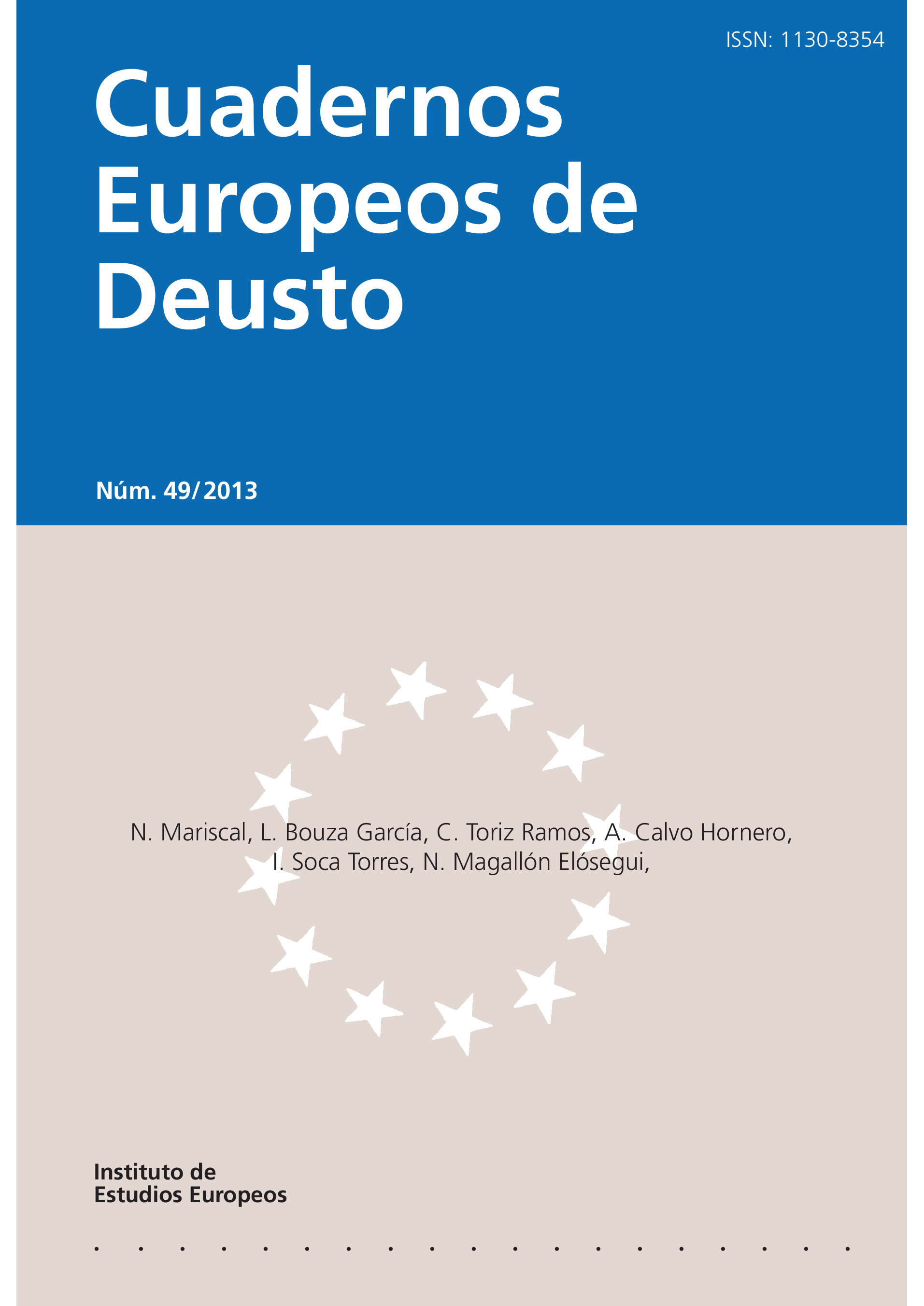Repensando la europeización
Abstract
In their first forty years, the theories of European integration studied the process and the result from a bottom-up perspective. But in the 90s of last century growth itself caused a change of direction: top-down, from the European integration to the Member States and to the sub-national entities. The debate over the dual direction has been and will continue to be crucial. This paper also examines the variables, mechanisms —with special reference to the «goodness of fit»—, causality and process tracing method. The crisis of the last five years and the subsequent German supremacy are challenging both the European integration and the process of Europeanization, which now looks like Germanization.
Received: 24 April 2013
Accepted: 12 June 2013
Published online: 15 April 2016
Downloads
The author grants to the Publisher the distribution, public communication, and reproduction rights of her/his work subject of publication in Deusto Journal of European Studies (DJES), whichever the media may be, including the permission to include it in the databases where this Journal is indexed and in the institutional repository of the Universidad de Deusto.
Upon its publication, the content of any Issue of Deusto Journal of European Studies (DJES) can be accessed, read, downloaded, copies, and distributed freely for non-commercial purposes and in accordance with any applicable copyright legislation.
The content of Deusto Journal of European Studies (DJES) can be subsequently published in other media or journals, as long as the author clearly indicates in the first footnote that the work was published in Deusto Journal of European Studies (DJES) for the first time, indicating the Issue number, year, pages, and DOI (if applicable). Any other use of its content in any medium or format, now known or developed in the future, requires prior written permission of the copyright holder.
The content of the work published in Deusto Journal of European Studies (DJES) is each author's sole responsibility. The authors assume the responsibility of obtaining all the necessary licenses for the reproduction in their manuscripts of any text, material or illustration coming from another author, institution or publication. The liabilities that may arise from complaints for publishing plagiarised articles are the sole responsibility of the author.


3.jpg)
2.jpg)
2.jpg)
2.jpg)
2.jpg)
2.jpg)







